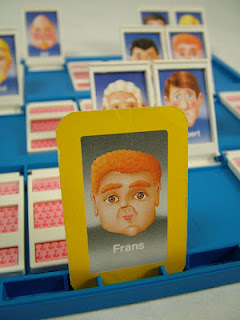Set Theory, Counting Methods, and Probability are probably my three favourite topics to teach. For the first time under our new curricular framework, I got to teach these topics to a group of seniors. I decided to build up large themes and understandings through introductory tasks; my goal was to create an “unflippable” entry point where students could work together to complete tasks and filter out necessary details such as rules, notation, etc. I began our study of Set Theory with this task.
The students were introduced to the idea of what a set is. They also were given some elementary verbiage. I wanted them to become comfortable using words like set, subset, and disjoint throughout the task. I did not introduce them to the idea of intersection and union–those were to be formalized through the task.
Category: tasks
There are two schools of thought when it comes to PBL:
- Start with a large-scale project and fit the specific outcomes within it, or
- Build toward a larger project with smaller tasks.
- Originally presented by Dan Anderson here. Included original Vat19 video and driving question about scale.
- Adapted by John Scammell here. Edited video and new driving question.
- Dan Meyer provided a 3Act framework for the problem here.
- Blair Miller adapted his own 3Act structure here.
 |
|
| http://www.flickr.com/photos/unloveable/2398625902/ |
Bike Trail Task
Painting Tape
Sprinkler Task
I am frustratingly mathematical. Ask my wife. I see the world as a combination of, in the words of David Berlinski, absolutely elementary mathematics.(AEM). The path of a yo-yo, the tiles in the mall, and the trail of wetness after a bike rides through a puddle are all dissected with simple, mathematical phenomenon. The nice part about AEM is that I can talk about it to almost anyone. People are (vaguely) familiar with graphs, geometric patterns, and circles even if they can’t decipher what practical implications they have on their city block. Unfortunately, people (and students) don’t often want to hear about them–they need to see them.
I can remember the look on my mother’s face when I broke out the silverware to show her that the restaurant table corner was not square. Without a ruler, I showed her that trigonometry allows us to rely on ratio rather than set measurements. As I was in the midst of showing her that the 3-4-5 knife-length rule was breached, the waitress came. Mom was horrified; I was thrilled.
Unexpected Lesson Extension
It is very hard to develop an active atmosphere in a math classroom–especially at the high school level. I believe there are two main reasons for this: 1) Students have been slowly trained throughout their schooling that a “good” math student is one that listens, absorbs, and repeats. 2) The content often reaches beyond what most teachers deem to be “constructable”. Rather than fight with these two restraints, I began my implementation of Problem Based Learning in a class with manageable curriculum content filled with students who never learned to sit still in the first place.
I designed a class around the pedagogy of Project Based Learning this semester. As the school year passes by at mach speed, I have adapted certain activities and projects to fit my students’ needs. The result is a class based around providing tools, and tackling interesting tasks with them. Each set of problems (or unit) is capped with a large project.
We are in the midst of a surface area and volume unit. We have tackled the major solids and prisms. Netting, superimposing grids, converting units, analyzing packaging etc. Throughout the entire class, I have been highlighting the various “employable skills” that they are honing with their work. Estimation, problem solving, critical thinking, diagnostics, peer work, spatial reasoning and the like.
My involvement with a provincial math executive presented me with an interesting task recently. Like most tasks, I turned to get some input from the strong contingent of math teacher tweeps.
I needed to develop an activity for 100-115 students in grades Seven to Eight. All I was told is that it should be about an hour and a half, and be active in nature. The students are taking part in a math contest in the morning, and it would be great to get the blood pumping. I turned these demands to twitter, and came up with some excellent options:
